Recently, you’ve probably heard all about “going green” and how it seems to be the new fad. A lot of people from all different parts of the world are doing their part in order to keep the earth healthy. More and more people are switching to behavior that is safer for the earth: they are driving hybrid cars, using solar and wind power, recycling, and cleaning with “green” products.
While one person going green doesn’t make much of a difference, there are whole countries that have upped their efforts in order to reduce their impact on the environment. Some of these countries may be more motivated because they are witnessing the effects of global warming first hand. For example, Norway, just like many of the other Arctic nations, has experienced a higher average temperature by 5.2 degrees, and glaciers and snow-covered slopes have been melting for years.
Below is a list of ten countries that have set the stage to creating a “greener” earth. All of these countries in some way or another have found ways to reduce their carbon and sulfur emissions, which leads to cleaner water and air. The list is based on each country’s Environmental Performance Index (EPI) rating which is provided by Yale University. For the complete list, visit epi.yale.edu.
10. Colombia – 76.8

European countries dominate the EPI list and Colombia is one of the few countries from the Americas green enough to rank. While you may not hear too many news stories about Colombia, you may have heard all about the deforestation that was going on in the country due to oil palm plantations as well as those who were illegally selling coca through the country. Because of this, the country was starting to become known for its violence and political strife, but somehow, Colombia has taken the negative as a learning lesson and begun to turn things around for the better of the country as well as the earth.
It is said that Colombia is home to 10% of various species found throughout the world. Scientist have also discovered that it may be home to as many as 10 new amphibious species, including the orange-legged rain frog as well as transparent-skinned glass frogs. With this in mind, the Colombian government has made efforts to turn the country into one that is eco-friendly. To do so, numerous national parks, some including native medicinal plants, have been opened, one of the most notable being the Orito Igni-Ande Medicinal Flora Sanctuary. Also, architects in Colombia have put down the steel and started to use bamboo, which they say is just as durable and reliable as a means to building structures. Even fashion has gone green in Colombia: designer Maria Nubia Ayala has created a line of clothing using leaves and flowers.
9. Cuba – 78.1

Though many don’t agree with the communist government leading Cuba, those who are urging people to become environmentally friendly just may have a warm spot in their heart for the Cuban government. Despite being known as a government that demands full control, it seems as though that stronghold has been weakened and that the government has decided to focus a lot of attention on the many ways of transforming the country into one that is greener. Cuba has never been a country that has been extremely harsh to the environment. Most who live in the country either travel by bicycle or foot, and many make their money by selling crops and raising livestock. However, there have been times when illegal pesticides were used as well as land that was abandoned.
To fix this, the country has put forth effort to reuse farm land, decrease the use of harmful pesticides, and to lower the sea level to ensure that salt from the water does not ruin the rich soil. Cuba has also decided to only use organic products on all farms. On the other hand, while other countries may focus on wind or nuclear energy, Cuba has decided to put a lot of effort and money into using hydroelectric energy. In 2008, the country began connecting many homes and businesses located in Guamá to a hydroelectric power station. Once it is all said and done and the 30 rivers located near or in Guamá are used, almost 7,000 people will have clean electricity.
8. Austria – 78.1
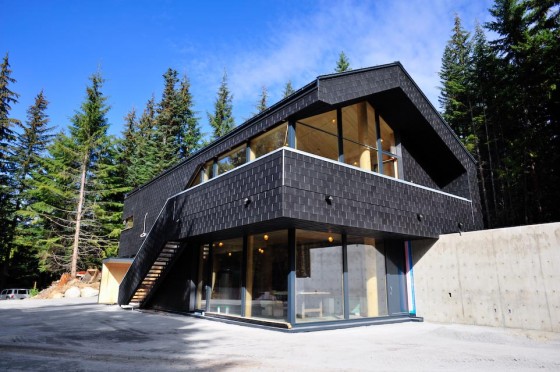
Though Austria doesn’t have many problems when it comes to being green and environmentally friendly, they have found very unique ways to ensure that their country is going green. The 2010 Winter Olympics were just one place where Austria planted its green footprint. To house the Austrian Olympic Committee as well as several broadcasters, the country built a “passive house” in Whistler, B.C. The passive house doesn’t use cooling or heating systems. In fact, it is self-regulatory and is able to heat and cool when necessary. This happens through a system that was designed keeping air-circulation, thermal heat, and high efficiency windows in mind. It is said that these passive houses use only 10% of the energy used in a common Canadian home. As of now, there are 17,000 of these homes built throughout Europe.
Most recently, Austria has teamed up with the Czech Republic in order to plant various eco-friendly gardens across the border between the two countries. There are already 330,000 gardens in Austria and 6,800 of them are natural and eco-friendly. Most of these gardens contain fruit trees, flowers, and even herbs. There are no pesticides used to treat the gardens; in fact, Austria doesn’t have to put in a lot of effort to keep the gardens looking beautiful. They use natural compost and rely on the rain for a source of water. Photo: Passive House, Whistler BC, blogspot.com.
7. France – 78.2

France is earning a reputation as an eco-friendly country. France’s president, Nicolas Sarkozy has been pushing for legislation that will conserve energy, as well as the environment. Some plans that Sarkozy has laid out include renovating all existing buildings to conserve energy, reducing greenhouse emissions by 20% in 2020, increasing the renewable energy rate from 9% to 20-25%, increasing organic farming, and creating an organization that will solely focus on reviewing and testing genetically modified crops. Along with all of this, sometime in the future, France plans to be home to a lot of nature reserves.
Though it seems like France is depending on a lot of hopeful proposals, it has actually made progress. France now gets 80% of its electricity from the use of nuclear power. Alès, a commune in France, is said to be one of the greenest locations in the country. The commune is home to one of only three buildings that utilizes solar panels as a means for energy. To encourage the use of solar panels, the country offers a reduction in taxes if a homeowner decides to use solar energy in their home. Outside of homeowners, France as a whole has decided to utilize more wood and straw bales; that’s right, straw bales to construct. It is said that straw bales are very sturdy, eco-friendly, renewable, and even provide for great thermal insulation. And no you can’t huff and puff and blow those structures down. Photo: Flickr, Jon’s Pics.
6. Mauritius – 80.6
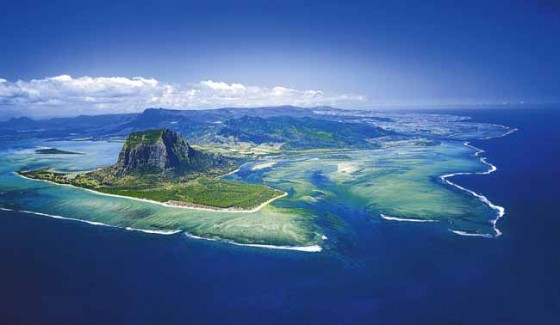
The country of Mauritius is an island off the coast of Africa and east of Madagascar. Though not everyone has heard of this small country, Mauritius may make a bold impact when it comes to going green. Finance Minister Rama Sithanen has decided that now is the time to ensure that the island is eco-friendly and promotes green practices. For one, the country wants to focus on recycling and finding ways to reuse items. This includes burning solid waste instead of storing or dumping it somewhere. Sithanen also wants to rely on renewable and cleaner types of energy. Because of its location, Mauritius could probably make good use of the water it is surrounded by, especially for air conditioning in homes and buildings.
As of now, the country is focusing on wind power and using sugar cane plants to create fuel, especially for boilers. However, the process of going green is definitely much harder for the country, as there are limited resources that can be used. Though Mauritius does have resources, a lot of the items that are used are imports from other countries.
5. Norway – 81.1
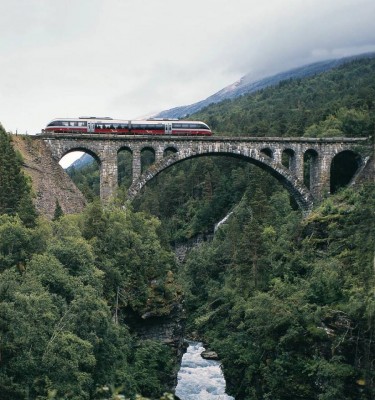
By 2030, Norway hopes to be a country that is carbon neutral. This means that the country plans to find ways so that there are no greenhouse gases emitted. This seems like a very steep goal as Norway is heavily reliant upon its oil rigs for export as well as for a source of energy. To achieve their goal, the government will be making big purchases of carbon offsets. But, before 2030 comes, the country also plans to cut its total emissions to 40%. Besides just focusing on reducing the amount of carbon put into the air, Norway has also planned to set aside large amounts of money to put towards other green-friendly ideas. For example, the country wants to focus heavily on utilizing railroads more, as well as finding an alternative source for fuel. Those who use diesel fuel will have to pay a higher fee for it. Outside of transportation, Norway hopes to have all businesses in the country run with flexible energy systems and from 2009 on, the use of oil-powered heating systems will be banned. The country will also focus on its great landscape, hoping to cut down on the amount of deforestation that takes place throughout Norway. The country is working closely with Sweden.
4. Sweden – 86.0
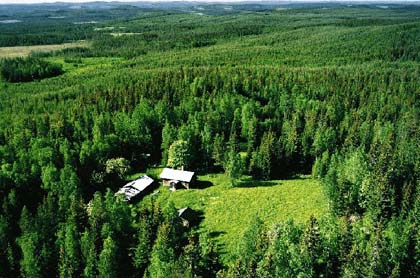
While the rest of the world deals with continuously fluctuating oil prices, Sweden has decided to make things a little easier for the country and its people by making a plan to phase out the use of fossil fuels by 2020; however, these efforts didn’t just begin. The change really started in the 1980s during the oil crisis. Efforts towards this new 2020 goal have already started and 28% of the energy and resources used in Sweden are renewable and eco-friendly. The country has really focused on the use of hydropower, nuclear power, and wind power to provide electricity and other necessities throughout Sweden.
One major way Sweden is going green is by using every piece of their forests. Though the trees are often used for various lumber projects, there is usually sawdust left behind. The government has decided that the sawdust can be manufactured into wood pellets, which are then sold to homeowners. The wood pellets are then used to generate heat. Sweden has also decided to cut back on the amount of fuel needed for transportation. Instead, many citizens in Sweden now power their cars using methane, which is taken from the entrails of cows. Seems a little disgusting but it’s green and low cost. Along with this, companies have even taken going green into their own hands. Companies that require their employees to drive train them to drive eco-friendly, which includes moderate speeds and no fast stops or starts, which means less fuel burned. Photo: http://www.borealforest.org/world/world_sweden.htm
3. Costa Rica – 86.4
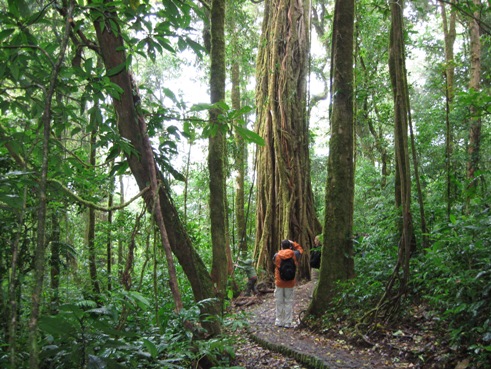
Coming in at third on the list, Costa Rica is a country that has set very high goals in order to go green, and stay that way. By 2021, Costa Rica hopes to be one of the few, if not the only country in the world that is carbon neutral. At this point in time, the country already utilizes plenty of renewable resources, which is very eco-friendly as there are less greenhouse gases that are polluting the air and even the water. The country’s location definitely acts as an advantage to them, as they don’t have to worry much about heating homes and buildings, seeing as how the country usually has temperatures ranging between 71-80 °F.
For decades, Costa Rica has been plagued with deforestation, but has made plenty of effort to reduce the amount of forest that is cut down and often abandoned. Because the country is very agricultural and known for its export of food, including corn and bananas, there is a great need for land to farm and produce these crops. However, the country has made use of the forest land and actually began to utilize the shade that is created by the canopy in order to successfully grow the necessary crops. This not only saves space, but greatly reduces the amount of pesticides used to protect the produce. Now Costa Rica is focusing on reforestation and building up the land that was ruined. In fact, the country planted over 5 million trees in 2008. This is not only in hopes to build up the forest, but to hopefully reduce the greenhouse gas emissions. Photo: monteverdetours.com.
2. Switzerland – 89.1
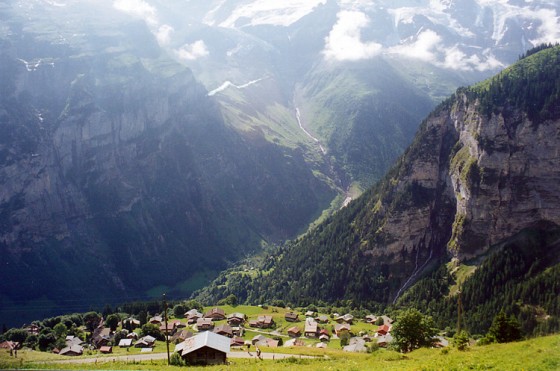
Though the leader in 2008, Switzerland has fallen to second place on the Environmental Performance Index. Switzerland has a long, proven record of being eco-friendly and protecting the environment. For instance, in 1914, the country created the first Alpine park located in the Alps, and the tradition has carried on, as the country plans to build at least 20 more of these parks. Not only has Switzerland added eco-friendly parts to their country, they’ve also taken a few things away. In some cities, cars are not allowed. You will only find people walking or riding bicycles to get to where they need to go. While it may seem a little strict, the country has even imposed a fee for disposing of trash in the country, though it is only 1 euro. There are also fees for using waste management services.
Not only is the government pushing for eco-friendly living, but even hotels are joining in with hopes to show that going green does have its benefits. For example, a very popular hotel in Switzerland, Badrutt’s Palace Hotel, offers discounts to those who arrive at the hotel in a hybrid car. To show their own efforts towards going green, the hotel had an entirely new heating system installed which is said to reduce its carbon output by 80% each year. The new heating system gets all of its energy from a nearby lake, as do many other hotels and even schools. Photo: gimmelwald.com.
1. Iceland – 93.5
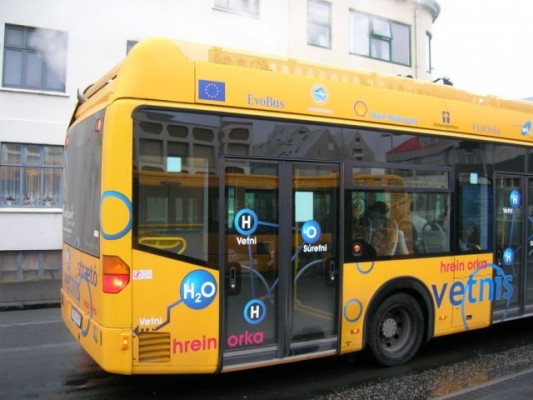
Said to be one of the most beautiful countries in the world, featuring glaciers, volcanoes, and even waterfalls, Iceland tops the list of being the greenest country. Though a pretty small island, said to be the size of Kentucky, Iceland has found a way to ensure that despite its size, it would be making a huge impact on becoming eco-friendly. Because of its location, Iceland has focused on using its geothermal landscape to utilize clean electricity and heat. The most commonly used source for heat and electricity is hydrogen, and the country hopes to become the first to be entirely reliant upon this energy source. Not only will the hydrogen energy be used by homeowners and those who occupy buildings, it is also used for transportation. The government of Iceland has provided hydrogen-powered buses to ensure people can get to their destinations in an eco-friendly way.
To go along with the buses, Iceland has put a lot of focus on the Mercedes Benz A-Class F-Cell. This car is also fueled by hydrogen and can go up to 100 miles on a full tank. Though the country wasn’t always so green, having depended on imported coal for 70% of its energy, nowadays, Iceland can proudly say that only 18% of its energy sources come from coal, the other 82% is pure hydrogen and geothermal power. While it may seem like a tough goal, by 2050, Iceland’s minister of industry and energy, Össur Skarphédinsson, hopes to have the country be carbon and oil free.
source: http://www.toptenz.net/top-10-greenest-countries.php
